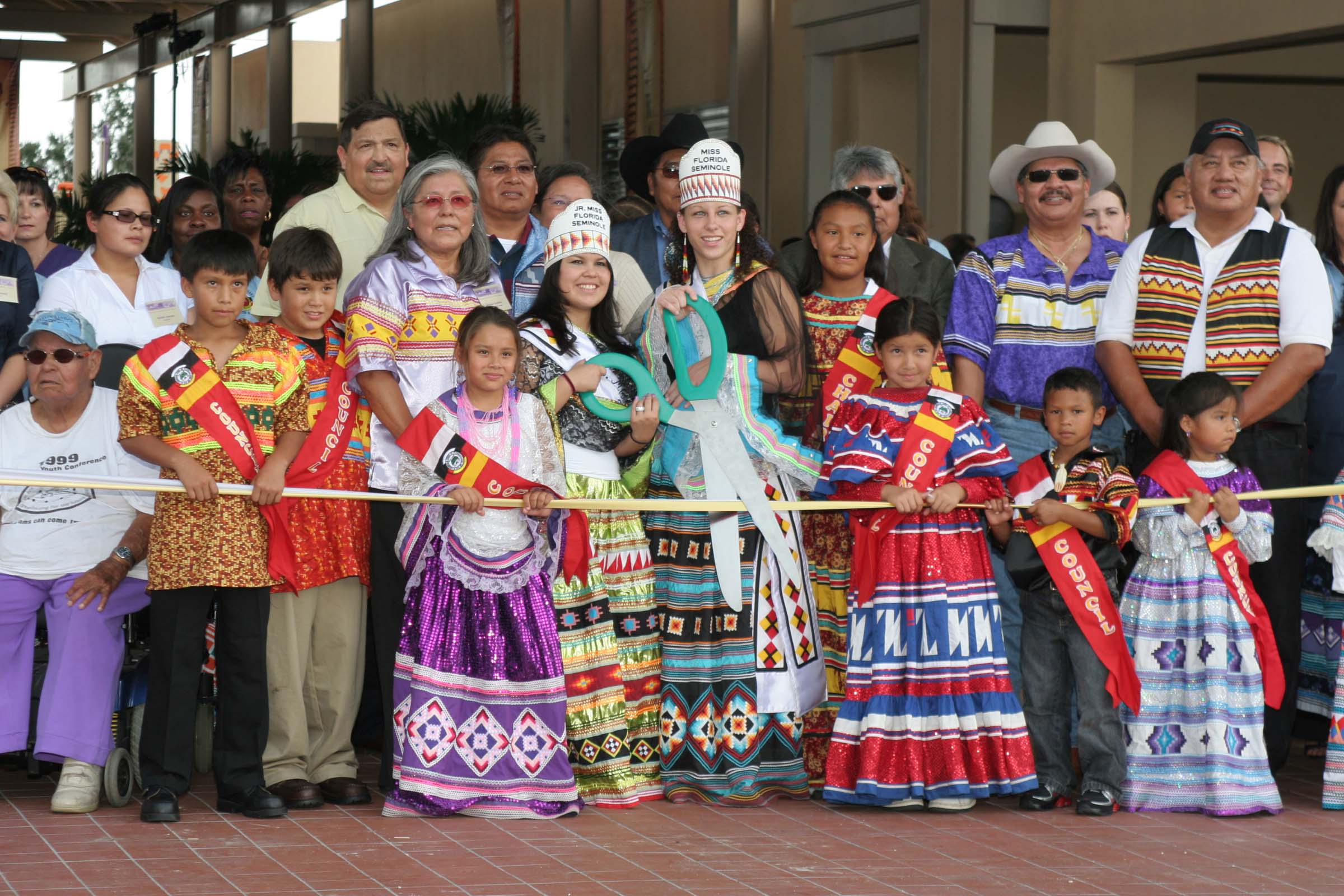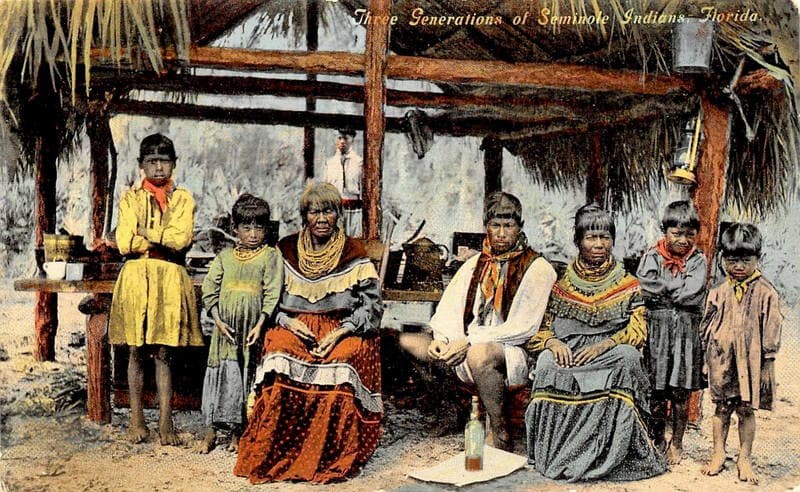
Echoes of the Unconquered: The Enduring Cultural Heritage of the Seminole Tribe of Florida
In the shimmering, sawgrass-laden expanse of the Florida Everglades, a story of unparalleled resilience and vibrant cultural tenacity unfolds. This is the ancestral homeland of the Seminole Tribe of Florida, a people whose very name, derived from the Creek word “simanó-li,” meaning “runaway” or “wild one,” encapsulates their defiant spirit and their refusal to be subdued. Unlike any other Native American tribe in the United States, the Seminoles proudly carry the distinction of being the “Unconquered People,” having never signed a peace treaty with the U.S. government. This remarkable history is not merely a footnote; it is the very bedrock of their identity, shaping a cultural heritage that pulses with strength, adaptation, and an unwavering connection to their unique past.
To understand Seminole heritage is to understand their epic struggle for survival. Formed from diverse groups of Creek Indians who migrated to Florida in the 18th century, along with remnants of earlier Florida tribes and runaway slaves, the Seminoles forged a new identity in the challenging Florida wilderness. When American expansion threatened their lands in the 19th century, they fought fiercely in three brutal Seminole Wars. While many were forcibly removed to Oklahoma, a determined core of roughly 300 individuals retreated deep into the impenetrable Everglades, choosing hardship and isolation over surrender.

"Our ancestors faced unimaginable hardship, but they never gave up," explains a tribal elder, a sentiment frequently echoed within the community. "They found strength in the land, in each other, and in their traditions. That spirit of resistance is woven into everything we do." This deep historical narrative is not just remembered; it is actively lived, informing every aspect of their cultural expression, from their intricate clothing to their spiritual ceremonies.
The Living Canvas: Patchwork and Traditional Arts
Perhaps the most visually striking and globally recognized symbol of Seminole culture is their vibrant patchwork clothing. Born out of necessity and ingenuity in the early 20th century when Seminoles began to acquire sewing machines, this art form evolved into a sophisticated and distinctive visual language. Strips of fabric, often in bold, contrasting colors, are cut into geometric shapes and then sewn together in complex patterns, creating a mesmerizing tapestry of lines, angles, and zigzags.
Each pattern tells a story, though not always a literal one. Designs like "Fire," "Man on Horseback," "Rain," "Ducks," and "Mountains" are abstract representations of the natural world and daily life. The labor-intensive process of creating these garments—dresses for women, shirts for men—is a testament to patience and artistic skill. Beyond their aesthetic appeal, patchwork garments are a powerful emblem of Seminole identity, worn with pride during ceremonies, at tribal events, and even in daily life, serving as a constant, colorful reminder of their heritage.
Beyond patchwork, Seminole artistry extends to basketry, utilizing natural materials like sweetgrass and coiling them into functional and beautiful vessels. Doll making, often featuring the iconic patchwork clothing, serves as both a children’s toy and a means of preserving traditional attire and storytelling. These artistic endeavors are not mere crafts; they are vital conduits for transmitting knowledge, history, and cultural values from one generation to the next.
Voices of the Land: Language and Oral Tradition
Language is the heartbeat of a culture, and the Seminole Tribe is unique in that two distinct languages are spoken within its community: Mikasuki and Creek (Muscogee). Mikasuki is primarily spoken by the Miccosukee branch and some Seminole families, while Creek is spoken by others, reflecting the diverse origins of the tribe. Efforts to preserve these languages are paramount, with immersion programs and educational initiatives designed to ensure that the ancient words and wisdom continue to resonate among the youth.
"Our language connects us to our ancestors, to the land, and to our understanding of the world," emphasizes a language preservationist. "When a language dies, a whole way of seeing and thinking dies with it. We are fighting to keep our voices alive." Oral traditions, storytelling, and songs are crucial components of this linguistic heritage, passing down tribal history, moral lessons, and spiritual beliefs through generations. These narratives often speak of the creation, the spirits of the Everglades, and the triumphs and trials of the Seminole people.

Sacred Rhythms: Ceremonies and Spirituality
At the core of Seminole spiritual life is the annual Green Corn Dance, a central ceremony traditionally held in late spring or early summer, marking the ripening of the corn and a time of renewal. This is a period of spiritual purification, forgiveness, and community bonding. The ceremony involves fasting, special dances (like the Stomp Dance), purification rituals, and the consumption of new corn. It is a time for setting things right within the community and with the spiritual world, reaffirming their connection to the land and the Creator.
The Seminole relationship with the land, particularly the Everglades, is profoundly spiritual. They view themselves not as owners of the land but as its guardians. Their traditional homes, known as chickees, exemplify this harmony. These open-sided, palmetto-thatched structures, built on stilts to protect against water and insects, are perfectly adapted to the wetland environment, requiring minimal alteration to the landscape. The chickee is not just a dwelling; it is a symbol of their ingenuity and their deep respect for nature.
Traditional foods, such as sofkee (a corn gruel), wild game, fish, and various plants gathered from the Everglades, underscore their intimate knowledge of their environment and their self-sufficiency. This deep connection to the land shaped their survival and continues to inform their cultural practices today.
Bridging Past and Future: Economic Development and Cultural Preservation
In the late 20th and 21st centuries, the Seminole Tribe embarked on a path of economic self-determination, most notably through the gaming industry. In 1979, they opened the first high-stakes bingo hall on a reservation in the United States, pioneering the path for tribal gaming nationwide. This economic success, however, has not led to a relinquishing of their heritage; quite the opposite. The revenue generated has been strategically invested back into the community, funding critical programs for healthcare, education, elder care, and, crucially, cultural preservation.
The Ah-Tah-Thi-Ki Museum, located on the Big Cypress Seminole Indian Reservation, stands as a testament to this commitment. Meaning "a place to learn, a place to remember" in the Mikasuki language, the museum serves as a vital institution for both tribal members and the public. It houses thousands of artifacts, photographs, and documents, telling the Seminole story through interactive exhibits, historical reenactments, and nature trails that wind through a cypress swamp. It is a place where Seminole youth can learn about their ancestors, and where visitors can gain a deeper appreciation for their rich culture.
"Our economic success gives us the resources to protect what is most valuable: our culture, our language, our traditions," states a tribal leader. "It allows us to build schools where our children learn both modern subjects and the ways of our ancestors. It allows us to preserve our history for future generations, ensuring that the spirit of the Unconquered People lives on."
Youth programs actively engage young Seminoles in traditional crafts, language lessons, and historical education, ensuring that the torch of heritage is passed on. The tribe also hosts annual cultural festivals, inviting the wider public to experience their dances, music, food, and arts, fostering understanding and dispelling misconceptions.
The Seminole Tribe of Florida represents a powerful narrative of survival, adaptation, and cultural vibrancy. From their defiant stand against overwhelming odds to their innovative economic ventures, they have consistently demonstrated an unwavering commitment to their identity. Their patchwork clothing, ancient languages, sacred ceremonies, and deep reverence for the Everglades are not relics of the past; they are living expressions of a dynamic culture that continues to evolve while holding fast to the wisdom of its ancestors. The echoes of the "Unconquered People" resonate not just through the Florida swamps, but across the nation, reminding us of the enduring power of heritage and the unbreakable spirit of a truly remarkable people.


